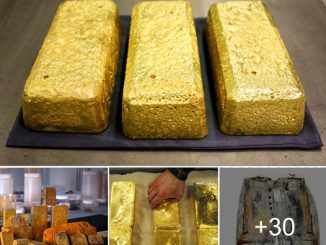1. Wood Ash
Do you know that you can use the wood ash from your fireplace as a secret ingredient for your plant’s growth?
When using wood ash in the garden, it’s essential to use it in moderation. Excessive application can raise soil pH too much, leading to nutrient imbalances and potentially harming plants. Additionally, it’s best to avoid using wood ash from treated or painted wood, as these may contain harmful chemicals.
Overall, incorporating wood ash into your gardening routine can be a sustainable way to improve soil fertility and support plant growth.
2. Aspirin
Apart from reducing pain, aspirin tablets can also be used in the garden as they contain salicylic acid that works on boosting the immune system of plants and prevents fungal diseases.
Using aspirin in the garden can be a cost-effective and natural way to help plants resist diseases and maintain overall health. However, it’s important to remember that while aspirin can be beneficial, it should be used in conjunction with other cultural practices such as proper watering, spacing, and sanitation to effectively manage plant diseases.
3. Leftover Fruits & Vegetables
Don’t throw the leftover fruits and vegetables in the garbage next time, as you can use them in your garden. There are many nutrients present in the peelings of vegetables and fruits.
By repurposing leftover fruits and vegetable peelings in your garden, you not only reduce waste but also improve soil health and support sustainable gardening practices. It’s a simple yet effective way to make the most of your kitchen scraps and nourish your plants naturally.
4. Vinegar
Add a cup of salt, a tablespoon of lemon juice, and two tablespoons of dish soap. Stir it well and spray it on plants.
If you’re dealing with pest or disease issues in your garden, it’s often best to consult with local gardening experts or extension services to determine the most appropriate and effective course of action for your specific situation.
5. Carbonated Water
CO2 is an essential part of photosynthesis, as plants cannot produce sugar in the absence of carbon dioxide and the sun. Thus, feeding the plants with water that has CO2, helps the plants to grow rapidly and greener.
In summary, while CO2 is essential for photosynthesis, watering plants with water containing CO2 would not provide a significant benefit for their growth. Instead, ensuring adequate light, water, nutrients, and proper environmental conditions will support healthy plant growth and development. If you’re interested in maximizing plant growth in a controlled environment, CO2 enrichment techniques may be worth exploring under the guidance of experienced horticulturists or agricultural specialists.
6. Coffee Grounds
Using coffee grounds as a fertilizer in the garden benefits your plants in a great way, as it provides ample aeration and improves drainage as well.
When using coffee grounds in the garden, here are some tips to keep in mind:
- Composting: Coffee grounds can be added to compost piles or bins along with other organic materials. Mixing coffee grounds with a variety of compostable materials helps balance the nutrient content and promotes decomposition.
- Mulching: Coffee grounds can be used as mulch around plants to help retain moisture, suppress weeds, and gradually release nutrients into the soil as they decompose.
- Direct Application: Coffee grounds can also be applied directly to the soil around plants. However, it’s essential to use them in moderation, especially if you have plants that are sensitive to acidic soil.
- Mixing with Soil: Before directly incorporating coffee grounds into the soil, it’s a good idea to mix them with other organic matter or soil amendments to prevent clumping and ensure even distribution.
By utilizing coffee grounds in your garden, you can improve soil fertility, support plant growth, and reduce waste by repurposing a common kitchen byproduct.
7. Eggshells
Eggshells are generally thrown in trash bins, but they are one of the best secrets of high-yield plant growth. They are rich in calcium and are also biodegradable.
The use of eggshells is particularly helpful for plants like tomatoes, which are often tormented by the deficiency of calcium.
Just crush the eggshells and mix them in the soil where you want to plant tomatoes.
Using eggshells in the garden is a sustainable way to recycle kitchen waste, improve soil fertility, and support plant health. While they may not completely eliminate calcium deficiency issues in tomatoes, they can certainly contribute to overall soil health and reduce the risk of blossom end rot.
8. Used Teabags/Leaves
Generally, people dispose of used teabags and leaves since they are not aware of their hidden benefits. Tea leaves and bags contain many nutrients that help in improving soil structure and drainage.
Also, used tea leaves contain nitrogen, potassium, phosphorus, magnesium, and calcium that boost plant growth. The tannic acid in tea can slightly change and reduce soil pH, like in coffee grounds, which makes it good for acid-loving plants.
To make use of used teabags and tea leaves in the garden:
- Composting: Used teabags and tea leaves can be added to compost piles or bins along with other organic materials. Their high nitrogen content helps balance the carbon-to-nitrogen ratio in the compost, accelerating decomposition and producing nutrient-rich compost for the garden.
- Mulching: Spread used tea leaves as mulch around plants to help retain soil moisture, suppress weeds, and gradually release nutrients into the soil as they decompose. Make sure to remove any staples or labels from teabags before using them as mulch.
- Direct Application: Simply bury used tea bags or sprinkle tea leaves around plants in the garden. Over time, they will decompose, enriching the soil with nutrients and organic matter.
By repurposing used teabags and tea leaves in the garden, you can reduce waste, improve soil fertility, and support healthy plant growth in a sustainable way.
9. Grass Clippings
Grass clippings decompose quickly and release nitrogen and some other nutrients back to the soil naturally, improving the quality of the soil of your garden.
Also, grass clippings provide an optimum environment for earthworms, and they, in return, encourage soil aeration. To learn how to make liquid fertilizer from grass clipping, click here.
When using grass clippings in the garden, it’s important to follow these guidelines:
- Avoid Herbicides: Make sure that grass clippings used in the garden have not been treated with herbicides or pesticides, as these chemicals can persist in the clippings and harm plants.
- Moderation: Use grass clippings in moderation to avoid creating thick layers that may mat down and restrict air and water movement in the soil. Thin layers of grass clippings are sufficient for mulching and composting.
Overall, grass clippings are a valuable resource that can help improve soil quality, promote plant growth, and support sustainable gardening practices. Instead of disposing of grass clippings, consider harnessing their benefits to enrich your garden soil naturally.
10. Compost Tea
If you’re an organic gardener, you can use compost tea to enhance the plant’s growth, as it helps in producing greener leaves, improving the flavor of vegetables, and boosting the size of plants.
It also encourages the growth of microbes and is an excellent replacement for chemical fertilizers that are harmful to beneficial insects and soil. It is one of the best natural ways to grow plants faster and bigger! Check this video for more info..
Using grass clippings in the garden is straightforward and cost-effective. Whether used as mulch, incorporated into compost, or directly applied to the soil, grass clippings can help plants grow faster and bigger while improving the overall health of your garden ecosystem.
However, it’s essential to use grass clippings responsibly and follow best practices to ensure optimal results. Avoid using grass clippings from lawns treated with herbicides or pesticides, as these chemicals can persist in the clippings and harm plants. Additionally, use grass clippings in moderation to prevent excessive buildup that may impede air and water movement in the soil.
Overall, incorporating grass clippings into your gardening routine can be a simple yet effective way to promote soil fertility, support plant growth, and cultivate a more sustainable garden environment.
11. Turmeric

Turmeric has the most effective compound, curcumin, which has many scientifically proven benefits for human health. Since it is an excellent pest repellent, sprinkling turmeric nearby the roots will keep pests at bay.
It also kills many disease-causing microbes that are harmful to plants as it is a natural fungicide and bactericide. It is one of the best Secrets of High Yield Plant Growth!
In summary, while turmeric’s active compound, curcumin, has numerous health benefits for humans, its effectiveness as a pest repellent in the garden may vary and hasn’t been extensively studied. It’s always a good idea to approach natural pest control methods with caution and consider their potential impact on plants, beneficial insects, and the environment.
12. Aquarium Water

Don’t consider fish tank water as waste as you can utilize aquarium water to nourish your plants since it holds decaying particles and fish waste that contain beneficial minerals and bacteria that help stimulate plant growth. It is one of the best natural ways to grow plants faster and bigger!
It also provides trace nutrients to the soil that helps plants to flourish.
How to Use: Use it normally for watering the plants. You can also dunk your air plants in it to fertilize them.
13. Milk

Milk is a good source of calcium that aids in making bones healthy and strong. But feeding your plant with a dose of milk in the garden also helps in a great way.
Apart from that, it has many other uses in the garden as well. You can use it as a fungicide by spraying a diluted solution on the plants.
Also, the application of milk helps in improving soil health, controlling insects, and acts as a disinfectant.
How to Use: Prepare a solution by diluting the milk with water, making a 50:50 ratio. Fill the solution in a spray bottle and use it on plants to kill the fungal infection.
14. Cinnamon

You must be definitely aware of the various uses of cinnamon in the kitchen, but have you ever heard about the use of this amazing spice in the garden for your plant health? Yes!
You can use cinnamon in multiple ways in your garden, such as a rooting hormone, to protect seedlings from diseases and to heal plant wounds.
How to Use: Add some cinnamon sticks to the warm water and allow them to steep overnight. Strain it the next morning and fill the solution in a clean spray bottle and spritz this solution on your plants to kill pests, heal plant wounds, and protect seedlings from diseases.
15. Activated Charcoal

Activated charcoal has many commercial and industrial uses, but you might not know that it can also be used for the growth of plants!
Applying a layer of charcoal to the soil makes your garden disease-free and productive. If you are a container gardener, use it by adding a layer of granular activated charcoal at the bottom of the container to improve drainage.
16. Boiled Vegetable Water

The remaining water, after boiling vegetables, is useful for your plants as it contains various micro and macronutrients. When you boil vegetables, many plant elements, such as calcium, nitrogen, and phosphorus, get mixed in the water.
You can use this water to provide nourishment to your plants as it greatly helps them in growth and flowering.
How to Use: Allow the water to cool down and use it for watering the plants.












